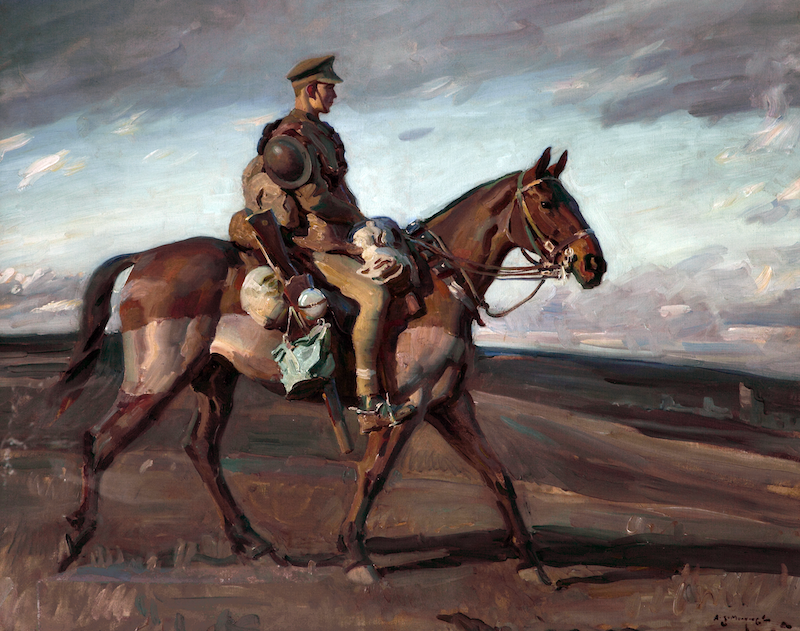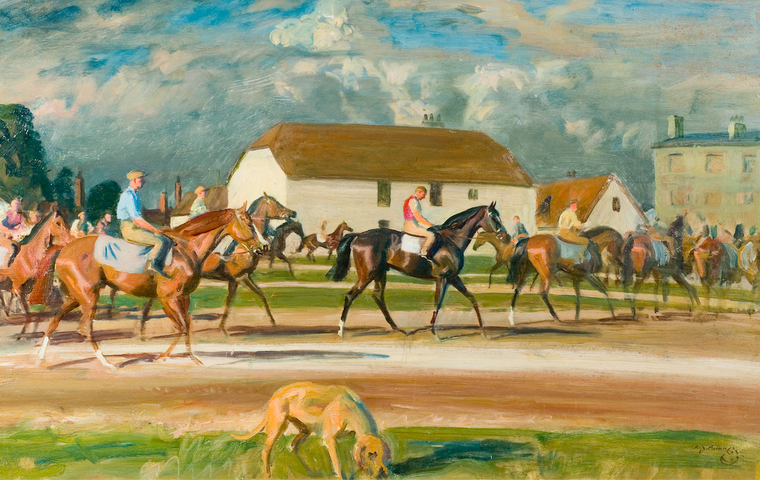
The work of Sir Alfred Munnings is currently being celebrated in an exhibition at the National Horse Racing Museum in Newmarket. Steve Dennis surveys the scene and considers the legacy of one of the greatest equine artists of the 20th century.
Buchan gazes resolutely stage right, his ears pricked with interest, his frame relaxed yet alert. He stands almost nobly at the centre of an unfinished canvas, its margins strewn with notes and reminders about this hue or that tint, yet he himself is perfect, brought intact from life itself into a gleaming visual vitality by the artist.
Some artist, too. Buchan has been largely forgotten by racing, twice a winner of the Eclipse Stakes in 1919 and 1920 but now lost in the fog of a century’s champions. Yet here he sustains, immortalised by one of the greatest painters of horses there has ever been, lent eternity by association with the peerless impressionist Sir Alfred Munnings, whose masterly body of work is currently being celebrated in an exhibition at the National Horse Racing Museum in Newmarket.
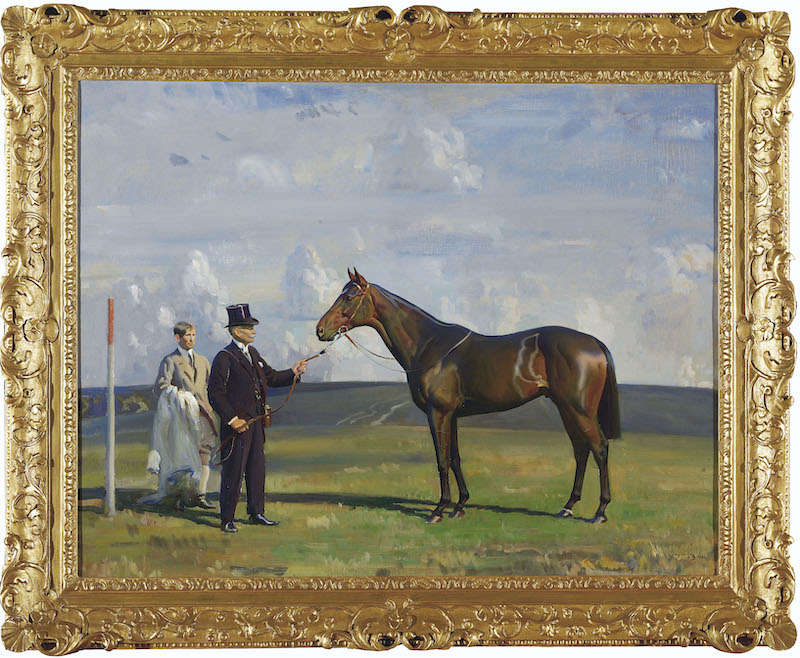 Munnings had a particular genius for capturing the movement of horses, the nuance and vigour of the electricity that surges beneath their skin and finds its outlet between starting gate and finishing line. Perhaps there is a line to be drawn between he and the description of jazz legend Charlie ‘Bird’ Parker by the poet Adrian Mitchell, who
Munnings had a particular genius for capturing the movement of horses, the nuance and vigour of the electricity that surges beneath their skin and finds its outlet between starting gate and finishing line. Perhaps there is a line to be drawn between he and the description of jazz legend Charlie ‘Bird’ Parker by the poet Adrian Mitchell, who
insists of the saxophonist that “he breathed in air, he breathed out light”.
Munnings painted with light, as though sunshine came in at the blunt end of his brush and dazzled out through the bristles, for although many of the backgrounds of his landscapes, his horse-scapes, are sombre, the subjects are luminous.
This is evident in several of the works contained in the exhibition, perhaps most affectingly in his ‘Trooper in Full Marching Order’, painted in 1918 during Munnings’s time as a war artist, in which a soldier and his mount stride across a featureless dim landscape on their way to some benighted front line. The poignancy of the image is offset by the poise of the charger and by the light that gleams brilliantly off his bit and browband, off his clipped-out flank, that brings him to majestic, enduring life in an arena of dourness and death.
Munnings (1878-1959) was a very English painter, born in the flatlands of East Anglia and brought up in a rural England where the horse was still king, before the usurping influence of the combustion engine hijacked the meaning of horse power. He forged the fundamentals of his art as a teenager, designing posters and advertisements for a local printer, before embarking upon a career as a painter of rural scenes that frequently, naturally, included horses.
Incredibly, the loss of sight in his right eye at the age of 20, when it was pierced by the sharp spikes of a blackthorn bush, did not affect his ability to paint or his perspective of his subjects, and in the years following his injury he painted extensively in the wild country of Cornwall, capturing the essence of a way of life that would soon fade from the world.
The Newmarket exhibition has several examples of this phase of Munnings’s work in a section entitled Symphonies in Grey and White, notably the rendering of the rocky coast at Lamorna in west Cornwall, where Munnings lived for a time and met his first wife Florence. Then came war. He was denied active service owing to his semi-blindness, but towards the end of the conflict he was taken on as a war artist by the Canadian Cavalry Brigade.
These battlefield commissions are integral to the Newmarket exhibition and form the basis of the section Pursuit of Patronage, which includes the aforementioned ‘Trooper’ painting. These works confirmed his status as a major artist and secured his financial and professional security, and the outpourings of the second half of his career are found in the section Painting for Pleasure.
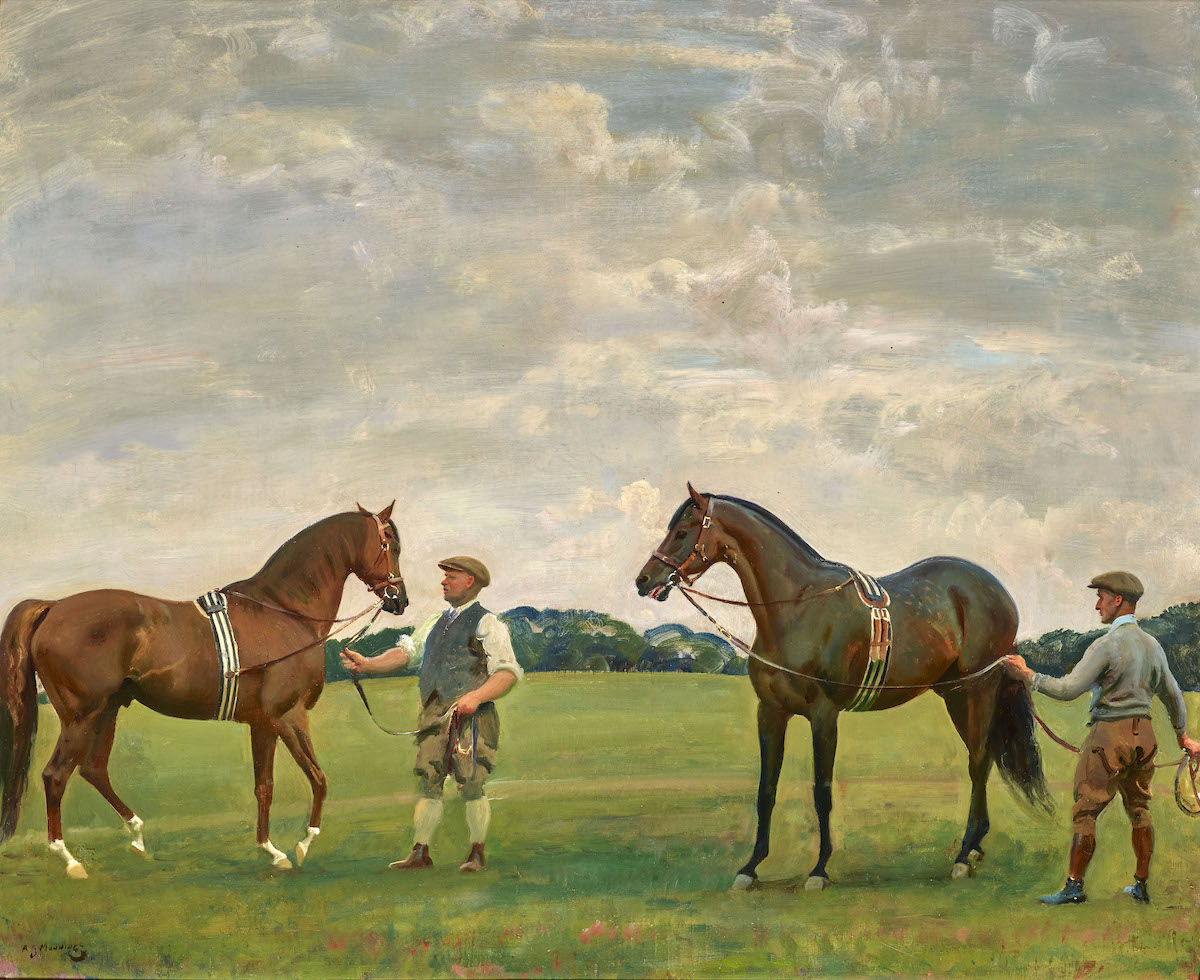 One important example included here is his portrait of champion racers and sires Hyperion and Fairway, captured at Lord Derby’s Woodland Stud under a wide sky cobbled with clouds. The smaller, white-footed Hyperion is on his toes, the darker Fairway more foursquare, and the overall effect is of a school reunion, two old boys let loose for the afternoon, one perky, one staid, reliving some episode of their younger days.
One important example included here is his portrait of champion racers and sires Hyperion and Fairway, captured at Lord Derby’s Woodland Stud under a wide sky cobbled with clouds. The smaller, white-footed Hyperion is on his toes, the darker Fairway more foursquare, and the overall effect is of a school reunion, two old boys let loose for the afternoon, one perky, one staid, reliving some episode of their younger days.
This period of Munnings’s activity is also characterised by his famous studies of the starts of races at Newmarket, in which he captured the fizzing energy and lavish colour of the milling throng of horses and jockeys, bringing the excitement of the racetrack wholesale to the observer. Again, his skies are often overcast and sullen and the greensward of the racecourse is unremarkable, so against these unprepossessing backdrops the horses, their coats vivid with the light from Munnings’s brush, and their brightly-clad riders are the sole source of illumination.
Munnings was knighted in 1944 and elevated to the presidency of the Royal Academy of Arts in the same year. Like many great practitioners in any sphere, he felt distaste for the threat of modernity, for the rise of the next generation with its new ideas and its scorn for the old ones, and made his feelings known in a memorable radio broadcast in which he attacked the work of Picasso, Matisse and their ilk as “desecrating the meaning of art”.
He was firmly in his cups at the time – he was an enthusiastic drinker – and millions of BBC listeners heard him drunkenly rail against the new wave, mumbling that art was intended to “fill a man’s soul with admiration and sheer joy, not to bewilder and daze him”.
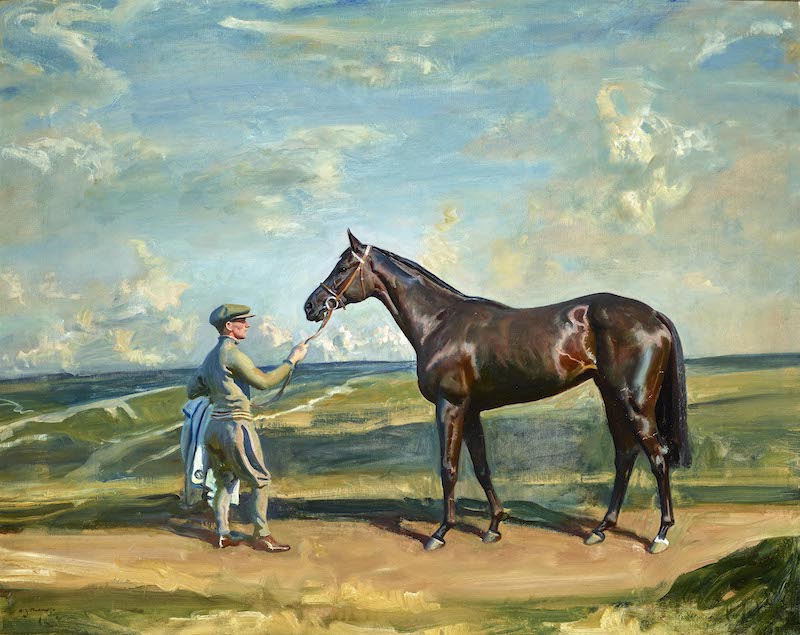 “If you paint a tree, paint it to look like a tree,” he spluttered. “If you paint a sky, try to make it look like a sky.” After this outburst he was dismissed as an old reactionary whose time had passed, and his reputation suffered as a result.
“If you paint a tree, paint it to look like a tree,” he spluttered. “If you paint a sky, try to make it look like a sky.” After this outburst he was dismissed as an old reactionary whose time had passed, and his reputation suffered as a result.
In recent years, though, that reputation has been resurrected. Now a Munnings can sell for a king’s ransom, such as the $7.8m paid for ‘The Red Prince Mare’ (1921) in 2007, and they can fill the galleries of the world for a new audience that views him not as a superannuated curmudgeon but as an artist whose skill is as relevant in the modern era as it was in the first half of the 20th century.
And by far his greatest legacy is his horses. Munnings took their inner glow and surface gleam and wrought of these materials a profusion of light and warmth, a lambency that radiates from every canvas and resonates in the mind’s eye long afterwards.
To gaze at Buchan, Hyperion and Fairway, and his high-mettled racers plunging and pressing at the start of the Cambridgeshire is, as he intended, as he insisted, to fill the soul with admiration and sheer joy. For the next few weeks, the National Horse Racing Museum will be aflame with his work.
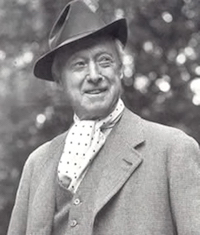 Sir Alfred Munnings (1878-1959) A Life Of His Own runs from May 24 to June 12 at the National Horse Racing Museum in Newmarket
Sir Alfred Munnings (1878-1959) A Life Of His Own runs from May 24 to June 12 at the National Horse Racing Museum in Newmarket
• Visit the National Horse Racing Museum website
Jay Hovdey’s Favorite Racehorses: Fran’s Valentine – ‘She continued to try so darn hard’
Baaeed looks brilliant – but is he the new Frankel?
Lou Hodges: Capturing the moment – 100,000 times and counting
View the latest TRC Global Rankings for horses / jockeys / trainers / sires



